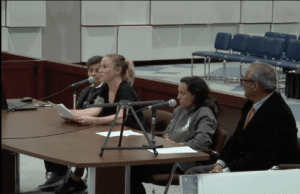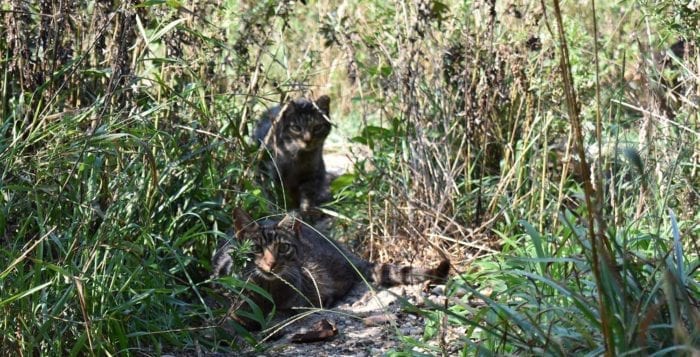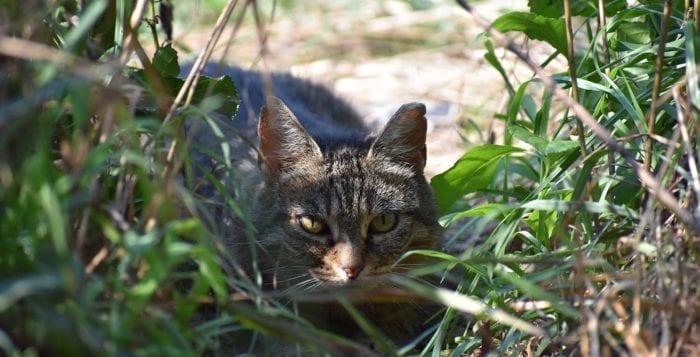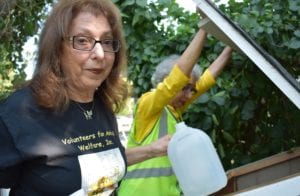With the growing issue of feral cats in Suffolk County, local animal rescue groups have told the Town of Brookhaven its current programs are not doing enough to stem the tide.
The rising population of feral cats on Long Island has been an ongoing issue for the past few years. In 2018, well over 300,000 cats lived in Suffolk County, including both feral and domesticated cats, according to data from the Suffolk County Society for the Prevention of Cruelty to Animals.

While trap, neuter and release programs have helped in combating the increasing population of feral cats, animal rescuer groups from the North Shore say the Town has not done enough to provide assistance in getting cats spayed and neutered.
Erica Kutzing, vice president of North Shore-based Strong Island Animal Rescue League, asked town officials at a board meeting Nov. 19 to consider creating a trap, neuter and release task force to assist local rescue groups in the ongoing feral cat crisis.
Kutzing said the rising population of feral cats has overwhelmed many animal groups’ resources, especially citing the lack of manpower and cost they themselves incur.
Since speaking at a previous board meeting, she posted a message on Facebook asking people who have unfixed feral cats to reply with the number of felines they need to get spayed and neutered.
Within 24 hours, 23 individuals had contacted Kutzing and among them they had a total of 324 unfixed feral cats that could “breed over and over again.”
She said if those 23 people got two free vouchers from the Town, as the current trap neuter return program allows, it would leave about 278 of those cats still untreated. A task force, she added, could be an effective partnership with the Town, adding they could bring in volunteer trappers to teach others and help facilitate the task force.
“Now they’re [the cat’s treatment] on nonprofit organizations and homeowners’ dime — who don’t usually want to spend their money on situations like this,” Kutzing said.
The vice president of the animal rescue group said the proposed task force would help bridge the gap between nonprofits and municipal shelters and cut feral cat numbers down.
As of now, two vouchers can be issued at a time to a resident, which critics said are not enough to handle the influx of feral cats.
The vouchers are redeemed at Integrative Veterinary Therapies in Ridge, though residents must first call the clinic to make an appointment at 631- 924-7700. That policy has been criticized by animal rescue groups.
Brookhaven Town Animal Shelter Director Christina Tormey said she does not speak to press and referred all questions to the Town
of Brookhaven.
A Brookhaven spokesperson said town officials could consider some of the proposed ideas brought up by the animal rescue group members, but added that the Town already has its own trap, neuter, release voucher program in place and at the moment the town doesn’t foresee making any major changes to it.
Kutzing said if half of the 278 cats are female, the current voucher program would do very little to stop the proliferation of feral felines.
“Multiply that by the average amount of kittens in a litter — five, that brings us to 695 kittens that will be born by the end of kitten season that normally occurs around February and March,” she said. “We don’t have room for 600 kittens, does Brookhaven Animal Shelter have room for this amount? Or hundreds more?”
Sue Hansen, Rocky Point resident and former Smithtown Animal Shelter supervisor, said the problem with feral cats is a community problem in need of local government support.
“We have and will continue to offer our time, experience and services but we need your assistance … an effective program that works with the volunteers is the solution,” she said.
A Selden resident asked the board to reconsider changes to the town’s TNR program.
“I have many kittens in my home because there is no place for them to go but I have to keep them isolated from my other animals, we need some help,” she said.
The Selden resident also mentioned the out of pocket cost to take care of these animals.
“I’m not a trapper, I’m able to reach out to see if I can get a trapper for those cats that are not chipped but who’s going to pay for that?” she said. “Who is going to take care of them when they recover? It is a serious problem … something has to get done.”








